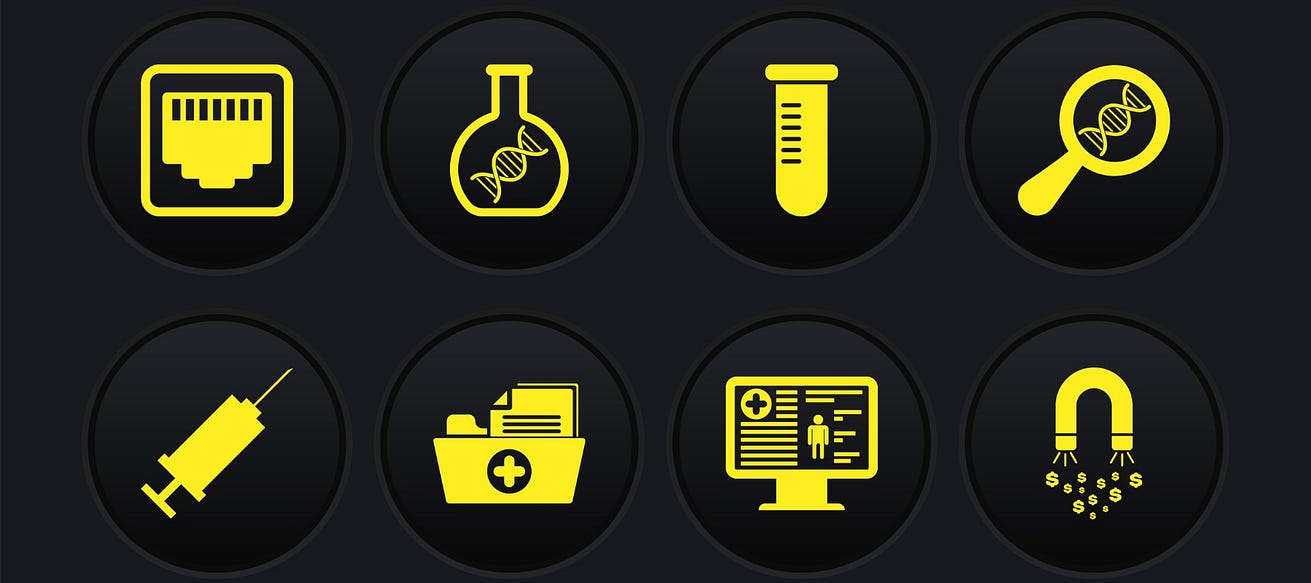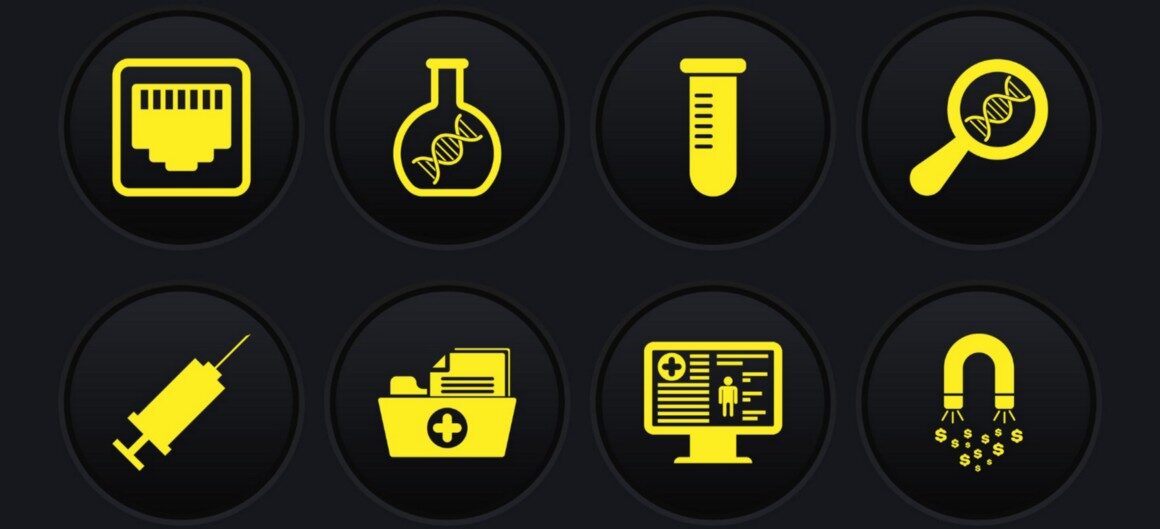National Academies
By Thomas Judd and Yadin David
May 27, 2022
Fiza Shaukat is a native of Pakistan living in the United States. As a biomedical engineer, she was eager to improve her country’s medical devices and digital health strategies. She approached us in 2018 seeking expertise in clinical engineering, which focuses on the point-of-care intersection between the use of health technology and the expertise needed for optimal support and resource management.
Pakistan, like many countries, has faced myriad systemic challenges, which were amplified by the covid-19 pandemic; these challenges include a fragmented delivery system and a lack of interoperability between medical devices, electronic health records, and other recent health technologies. We worked with Fiza on a health technology asset management method. Later, during the pandemic, we pointed her and her in-country colleague Tazeen Bukhari to the covid-19 inventory tool, offered by the World Health Organization (WHO), to assess national gaps in the availability of medical devices and oxygen; the information was used to inform the Pakistani Ministry of Health’s plan for confronting the pandemic.
Meanwhile, Fiza faced the premature loss of her grandmother due to cardiac complications — she had not received care in a timely manner because patient data and test results could not be shared quickly between providers. Fiza took initiative so that her loss would not be repeated for other families. She brought a technical solution to the point of care, using clinical engineering and emerging health information technologies.[2]
As clinical engineers (CEs), we have encountered variations of Fiza’s story in several countries.
Clinical engineers support and advance patient care outcomes by applying engineering, life sciences, and managerial skills to optimize healthcare technology during its life cycle deployments.
They are sought for their systems thinking expertise, to conduct an independent validation of healthcare products, identify support requirements, and ensure that medical device users’ needs are met and that products are accessible and ready for patients.
They assess and manage the use of health technologies, which WHO defines as “the application of organized knowledge and skills in the form of (medical) devices, medicines, vaccines, procedures, and systems developed to solve a health problem and improve quality of care and/or life,” including both traditional medical devices and emerging digital health tools.[3]
Clinical engineers support and advance patient care outcomes by applying engineering, life sciences, and managerial skills to optimize healthcare technology during its life cycle deployments.
To illustrate the range of CE contributions, we offer two examples.[4]
The first is in device innovation.
In remote desert-like regions of Western and South Australia treatment for trauma victims requires long-distance and space-limited transportation.
The patients are often in shock and require a blood/fluid transfusion. But these fluids are kept at a very low temperature, and rapid infusion of cold fluids can worsen a patient’s condition or even induce hypothermia.
Two clinical engineers developed a fluid/blood warmer that does not require electrical power but uses the latent heat principle to warm intravenous fluids at accident sites, overcoming the lack of suitable portable fluid warmers that are not dependent on main electrical or battery power.
The second example involves risk reduction and safety of medical devices at the point of care.
A clinical engineer and his team in Mexico’s National Center of Health Technology Excellence investigated national management of medical equipment in public hospitals.
They concluded that, among the country’s 32 states, health technology management was effectively coordinated by trained CE practitioners.[5]
Clinical engineers are trained to identify challenges and opportunities to improve healthcare delivery through the adoption of effective and safe technological solutions.
For example, “alarm fatigue” can be eliminated in ICUs with smart medical device alarms that triage the urgency of attention needed, distinguishing life-threatening events from those less urgent.
And remote care for patients isolated due to infection concerns can reduce the time and cumbersome logistics involved for care providers to monitor and tend to their patients.
Clinical engineers recognize the need for both systems expertise in healthcare partnerships and the development and implementation of national policies to reduce fragmentation and inefficiencies in healthcare delivery.[6]
The case for such expertise and partnerships has been made in classic consensus reports of the National Academy of Medicine — To Err Is Human: Building a Safer Health System (2000), Crossing the Quality Chasm: A New Health System for the 21st Century (2001) — and in a joint publication with the NAE, Building a Better Delivery System: A New Engineering/Health Care Partnership (2005).
The latter report notably described “opportunities and challenges to using systems engineering, information technologies, and other tools to advance a twenty-first century system capable of delivering safe, effective, timely, patient-centered, efficient, equitable health care” (p. vii).
We are encouraged to see recent evidence of engineering partnership improving healthcare delivery, in the May 2021 NAE Perspective, ERs Rise to the Covid-19 Challenge: Teamwork between Engineers and Healthcare Providers Cuts ER Waiting Time, and in a Johns Hopkins University January 2020 article, Enter the Surgineer. But the vision, alas, is yet to be fully realized.
Since 2020 the US healthcare delivery sector has lost over 300,000 workers,[7] exacerbating a staffing shortage that existed before the pandemic. Nurses are among the most impacted group.[8]
Since 2020 the US healthcare delivery sector has lost over 300,000 workers,[7] exacerbating a staffing shortage that existed before the pandemic. Nurses are among the most impacted group.

The use of health technologies must be strategically guided, with coordination and management of resources, and policies that guide technology-related outcomes.
A new approach that includes shared interprofessional training can help alleviate the situation by training clinical engineers for engagement at the point of care.
We envision broader systems responsibilities for all care delivery team members, to overcome the segmented and increasingly specialized healthcare workforce and thus ensure higher quality and safety through a new collaborative approach.
We envision broader systems responsibilities for all care delivery team members, to overcome the segmented and increasingly specialized healthcare workforce and thus ensure higher quality and safety through a new collaborative approach.
The Intersection of Technology and Healthcare Delivery
Clinical engineers have the expertise to facilitate a systems approach to health, where technological tools are needed to measure health system inputs and outputs.
Tools for monitoring and reporting clinical parameters and laboratory results enhance the identification of early trends in large populations and can support better health and wellness.
The use of health technologies must be strategically guided, with coordination of local, national, and international resources, optimal resource management, policies that guide technology-related outcomes,[9] and plans for life cycle stages.
To that end, a healthcare model is needed that integrates the delivery of care to improve both care outcomes and patient experience.[10]
Such integration requires adequate knowledge of the technology life cycle, from innovation to application; academic programs that keep up with changes to point-of-care technologies; and participation in technological innovations such as robotics, artificial intelligence, and implantables.
Clinical engineers have a foundational role in this integration, with their unique knowledge related to the management of health technology systems and validation at the point of care.
In coordination with clinicians and other stakeholders, CEs are demonstrating the benefits of their inclusion as equal members of the healthcare delivery team, particularly during the global pandemic, at both the point of care and population health levels.[11]
Global Need
As the sales of global medical products are predicted to reach $658 billion by 2028,[12] it is clear that, for optimal return on investment and sustainability, the implementation of such products should be managed and supported by trained professionals such as clinical engineers.
As the sales of global medical products are predicted to reach $658 billion by 2028,[12] it is clear that, for optimal return on investment and sustainability, the implementation of such products should be managed and supported by trained professionals such as clinical engineers.
During the first 2 years of the covid-19 pandemic, WHO’s World Health Assembly focused on the need for intensive care ventilators (2020) and medical oxygen (2021).[13]
WHO has specifically recognized clinical engineers for optimally managing assets such as medical devices, personal protective equipment, oxygen, and digital health tools, particularly in low-resource settings.[14]
Two CE organizations, the International Federation of Medical and Biological Engineering Chemical Engineering Division (IFMBE CED) and the Global Clinical Engineering Alliance (GCEA), grew tremendously during the pandemic with a surge in the need for their members’ expertise.
In partnership with WHO, these organizations are now connected to colleagues in nearly 200 countries, sharing best practices and solutions to complex challenges.
The next step is to build the right systems capabilities for improving global healthcare delivery.
A Call for Action
For clinical engineering to transition from localized point of care to population health, certain systems competencies must be in place:
1.Education of the workforce to create greater collaboration and resiliency.
Collaborative interdisciplinary educational training[15] will ensure the systems skills needed to maximize the benefits of health technologies.
With demonstrated competencies and internationally coordinated professional credentialing, CEs will be prepared to be equal partners with the other members of a healthcare team, participating in new clinical roles and workflows to free physicians and nurses for direct patient care.
2.National health technology policy to address priority national challenges.
Pandemic-related impacts necessitated rapid implementation of national health technology policy in many countries.[16]
This and experiences with other disasters (e.g., floods, wildfires, earthquakes, power outages) clearly show the need for international coordination of new national guidelines to sustain access to, availability of, and the transfer of critical healthcare technology tools.
Clinical engineers can play an important role in informing and implementing such policy.
3.National and international alliances and partnerships to share expertise and lessons learned.
Such alliances will coordinate meetings of healthcare stakeholders (e.g., clinicians, administrators, and ministry of health personnel with clinical engineers) to examine areas of concern where CEs can make a difference. For example, the Global Clinical Engineering Alliance has offered webinars, a virtual international congress, and a global CE summit to identify and rank common global challenges.
Such alliances can help those in the health sector, industry, academia, and NGOs drive cost-effective and high-quality innovations in healthcare delivery, and manage the performance of the technology used at both point of care and in regional and global populations.
As healthcare delivery systems around the world increasingly depend on technology for access to the best care, the expertise of clinical engineers in the use and management of this technology is critical for achieving best outcomes.
For both point-of-care and population health, a systems approach can improve the delivery of health services through education, workforce collaboration, policy development, and partnerships.
Clinical engineers are indispensable partners in achieving this mission.
Just as Fiza was driven to overcome challenges, the approach described here shows a pathway to achieve the outcomes we all need.
As healthcare delivery systems around the world increasingly depend on technology for access to the best care, the expertise of clinical engineers in the use and management of this technology is critical for achieving best outcomes.
Originally published at https://www.nationalacademies.org.
About the authors
Thomas Judd is former national project director for clinical technology at Kaiser Permanente and chair of the International Federation for Medical and Biological Engineering’s Clinical Engineering Division.
Yadin David is the principal of Biomedical Engineering Consultants LLC and interim president of the Global Clinical Engineering Alliance.

Notes:
[1] Thomas Judd is former national project director for clinical technology at Kaiser Permanente and chair of the International Federation for Medical and Biological Engineering’s Clinical Engineering Division. Yadin David is the principal of Biomedical Engineering Consultants LLC and interim president of the Global Clinical Engineering Alliance.
[2] See “Women Shaping the Health Tech World 2021” (https://www.youtube.com/watch?v=DHV5hNqNeI4).
[3] WHO Compendium of Innovative Health Technologies for Low-Resource Settings 2021: Covid-19 and Other Health Priorities. Geneva. p. vii.
[4] For further evidence of the scope of CE contributions, see Clinical engineering success stories and patient outcomes based on evidence from 125 countries (chapter 3, Clinical Engineering Handbook, 2nd ed., 2020, Academic Press).
[5] Ayala R, Orencio E. 2019. Identification of health technology management departments in Mexico’s state health services. Global Clinical Engineering Journal 1(2):17–21. In their article CEs are referred to as biomedical engineers.
[6] Many CE success stories are reported in our 2020 article, “Evidence-based impact by clinical engineers on global patients’ outcomes” (Health & Technology 10(2):517–35).
[7] US Bureau of Labor Statistics. 2022. The Employment Situation — April 2022.
[8] Kreimer S. 2022. Nursing shortage looms large and projected to intensify in next 18 months: Report. Fierce Healthcare, Apr 5.
[9] For an introductory resource on Development of Appropriate Health Technology–Related Policies and Legislation, see IFMBE CED 2020 Webinar on Healthcare Policy.
[10] Such impacts are demonstrated in the projects recognized by the Healthcare Information and Management Systems Society (HIMSS) Davies Awards.
[11] See the presentation by Claudio Meirovich on “Covid Case Studies” (track F3) at the IFMBE CED-GCEA October 2021 Global Virtual Congress.
[12] Fortune Business Insights. 2021. Medical Devices Market…2021–2028.
[13] WHO Priority medical devices list for the COVID-19 response and associated technical specifications
[14] WHO. 2017. Human Resources for Medical Devices. Geneva. See pp. 24 (table 1) and 40.
[15] Institute of Medicine. 2015. Measuring the Impact of Interprofessional Education on Collaborative Practice and Patient Outcomes. Washington: National Academies Press.
[16] Sharma J, Bunders J. 2020. A model for priority setting in health technology innovation policy. Global Clinical Engineering Journal 2(3):24–34.








